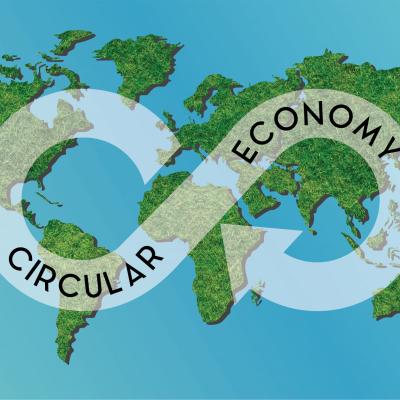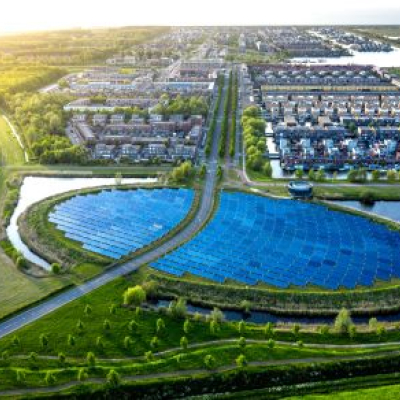Across the world, governments, development agencies, and business leaders are zeroing in on a new, bold path for economic progress: the twin transition. This vision originates from the New European Industrial Strategy and the European Green Deal, which aim for carbon neutrality in Europe by 2050. This dual shift – towards greener, more sustainable ways of living and the growing integration of digital tools in every aspect of our society - is increasingly viewed as the foundation for inclusive, future-ready development. From climate resilience to digital equity, the twin transition promises a more balanced and just society. Yet one truth continues to fly under the radar of major policy discussions and strategic decks: without microenterprises, this twin transition will never reach the people who need it the most. These grassroots businesses are the cornerstone of local economies and essential conduits for translating high-level ambitions into real-world, human-centered impact.
The twin transition is an urgently needed lifeline for the small business sector in the EU
SMEs constitute approximately 99.8% of all European enterprises and contribute to around 65% of overall employment in the business economy. Despite the potential benefits, Eurostat data reveal that small companies are lagging in the adoption of digital technologies, with only 58% of SMEs in the EU27 having at least a basic level of digitalisation in 2023. On the other hand, while the green and digital revolutions are often framed in aspirational terms - something to work towards in the future - small entrepreneurs experience them every day. For them, going green or going digital is not a strategic option on the horizon; it is a day-to-day necessity for survival and growth.
Consider the rural farmer who, facing unpredictable weather patterns, installs a solar-powered food dehydrator - not as a sustainability statement, but to protect the harvest from spoilage without relying on expensive fuel. Think of the seamstress in a densely populated informal settlement who bypasses the costs of a physical storefront by building a client base through mobile apps; or the street vendor who adopts mobile money - not for trendiness, but to create a traceable financial history that might one day secure a loan and grow his business. These are not flashy tech solutions. They are practical, often self-taught innovations - quiet revolutions happening in backyards, market stalls, and community hubs. Taken together, they signal something important time and again: the twin transition is already happening at the micro level. It is just not being resourced or recognised at the scale it deserves.
Green by nature, digital by necessity: What’s holding microenterprises back?
In Eastern Europe, most microenterprises did not wait for sustainability workshops to embrace resource efficiency. Driven by necessity rather than policy, they have long practised the principles of circularity - reusing materials, conserving energy, and minimising waste - simply to stay afloat. These practices were not framed as climate action; they were acts of business survival. Long before green became a headline-grabbing term, these businesses were quietly modelling what a sustainable enterprise looks like in real life. Now, they are stepping into the digital realm, unfolding organically and often under the radar. It is sleek, clever, and deeply adaptive, but it is also vulnerable. Without dedicated support systems - affordable digital tools, tailored training, and inclusive tech infrastructure - these microenterprises risk stalling out. The danger is a two-speed transformation, where large firms sprint ahead with institutional backing, while smaller players are left piecing together solutions with limited resources. Supporting their digital leap encourages smart economics in the EU: when microenterprises thrive, entire regional communities rise with them.
Despite their vital role, micro- and small enterprises are often left out of green and digital development programmes. This is because most systems are not built with them in mind. Green and digital initiatives often operate in silos. A business might get a sustainability grant but lack access to digital tools or vice versa. The twin transition demands integrated solutions. Microenterprises struggle to access capital, digital infrastructure, clean energy, and reliable data. These are structural inequalities baked into our development systems.
Moreover, many digital platforms and green technologies are designed for urban, well-connected, and formal-sector users. They fail to serve the unique needs of rural, informal, and low-resource settings where most microenterprises actually operate.
Uphold the power of microenterprises with a bottom-up blueprint
To ensure the twin transition is inclusive and sustainable, we need to build it from the bottom up, with micro businesses at the centre, not on the sidelines. As development professionals, we must stop training for “green” or “digital” in isolation. Real-world needs are hybrid. There is a clear need for dual-skills programmes that blend solar tech with e-commerce or regenerative farming with mobile marketing, for instance.
Secondly, we have to create financial strategies and programmes that align with the hybrid reality micro- and small enterprises face. We need to combine support for digital access and green upgrades into one flexible, accessible offering tailored to small-scale needs.
The European Commission’s Strategic Foresight Report, which builds on the Joint Research Centre (JRC)’s twin transition study, also calls for a future-proof regulatory framework for the Single Market, conducive to sustainable business models and consumer patterns, for instance, by:
-
constantly reducing administrative burdens,
-
updating our state aid policy toolbox or
-
using artificial intelligence to support policymaking and citizens’ engagement.
In addition, The SME Twin Transition monitor for the EU highlights that by implementing digital solutions, enterprises can exploit a range of opportunities, such as better integrating their operations, increasing their resilience, reducing costs, and reaching new markets. Thus, the twin transition is more than a policy trend: it is a once-in-a-generation opportunity to redefine what inclusive, resilient progress looks like. For it to succeed, we must recalibrate our lens: from top-down solutions to bottom-up empowerment, from scaling tech to scaling trust in those quietly innovating every day.
Concluding thoughts
We can use platforms like Capacity4dev to amplify the stories, strategies, and solutions already built by micro-entrepreneurs, and facilitate knowledge-sharing, visibility, and collaboration across borders. Microenterprises may not grab headlines or attract large-scale investment, but they are quietly reshaping our economic future. They are proving, day in and day out, that climate resilience and digital adaptability are not only possible but already in motion.
If the twin transition is designed only for big businesses or formal economies, it will fail to reach the people it most urgently needs to serve. The future of green and digital progress depends on the very entrepreneurs already living in that future - on the margins, in informal settlements, in under-connected towns, and across remote areas.
Instead of asking whether microenterprises are ready for the future, let’s flip the question: Are we ready to recognise, support, and invest in the future they are already building? When it comes to the twin transition, microenterprises are not too small to matter: they are too important to ignore.









Log in with your EU Login account to post or comment on the platform.